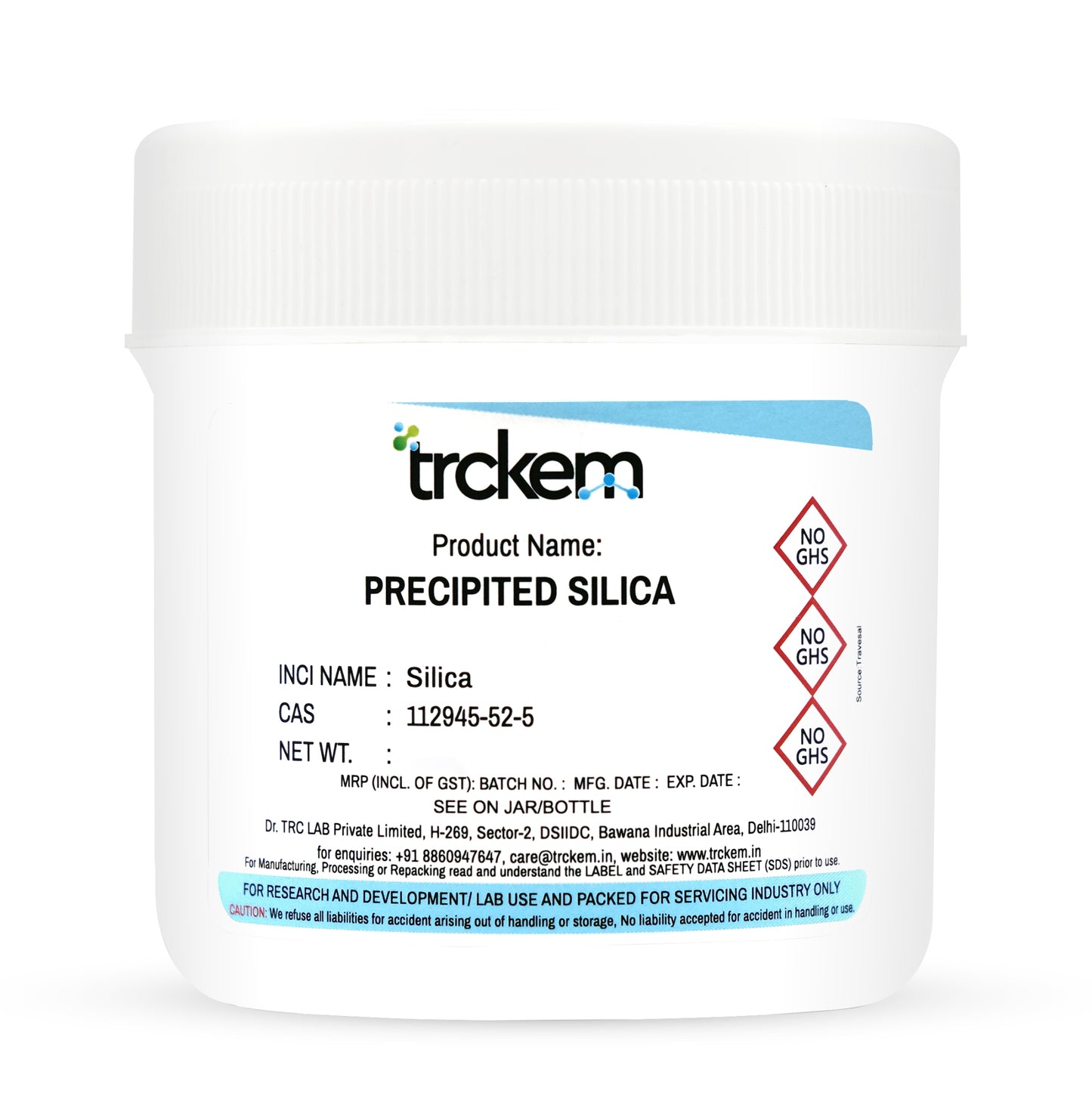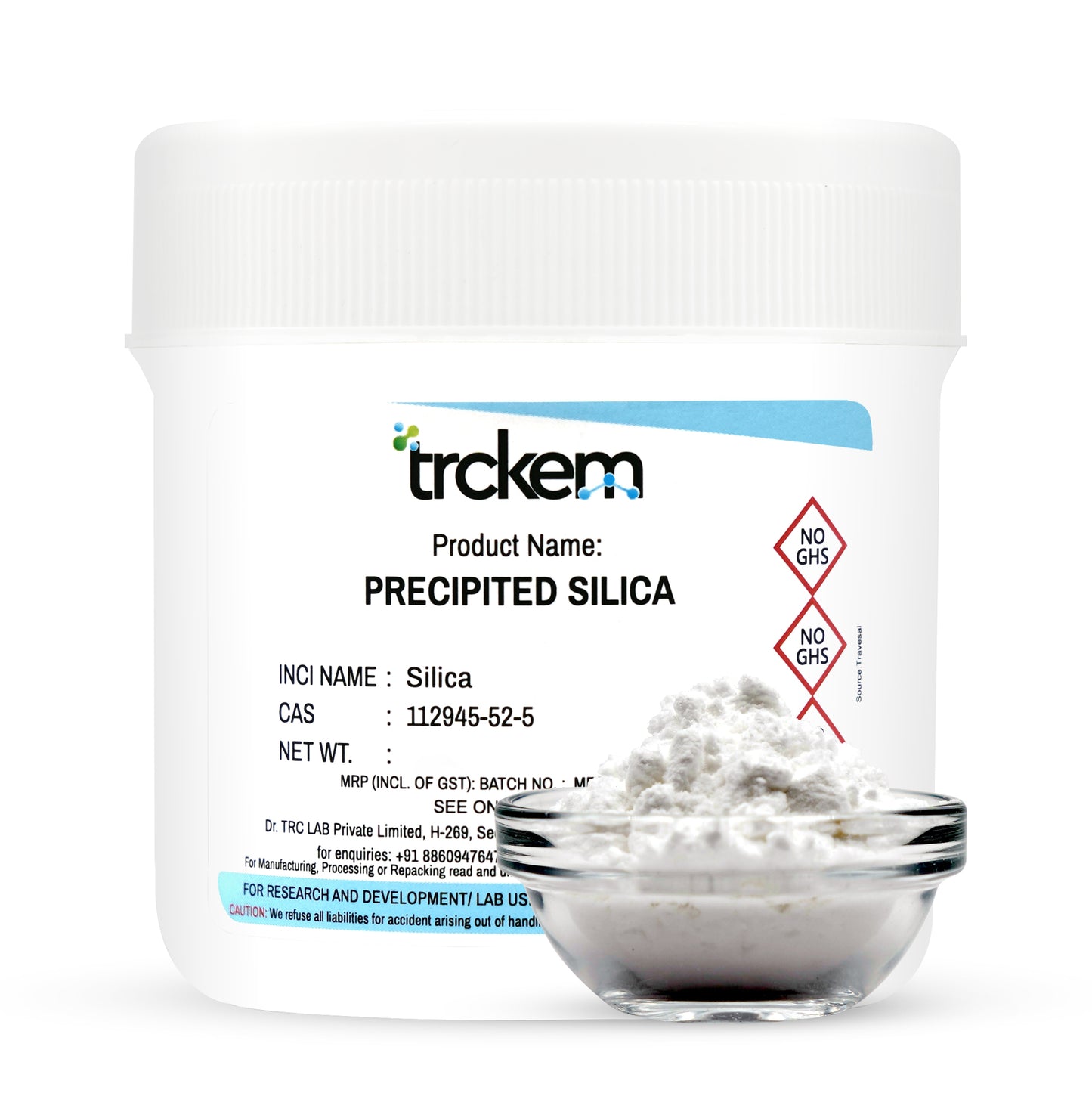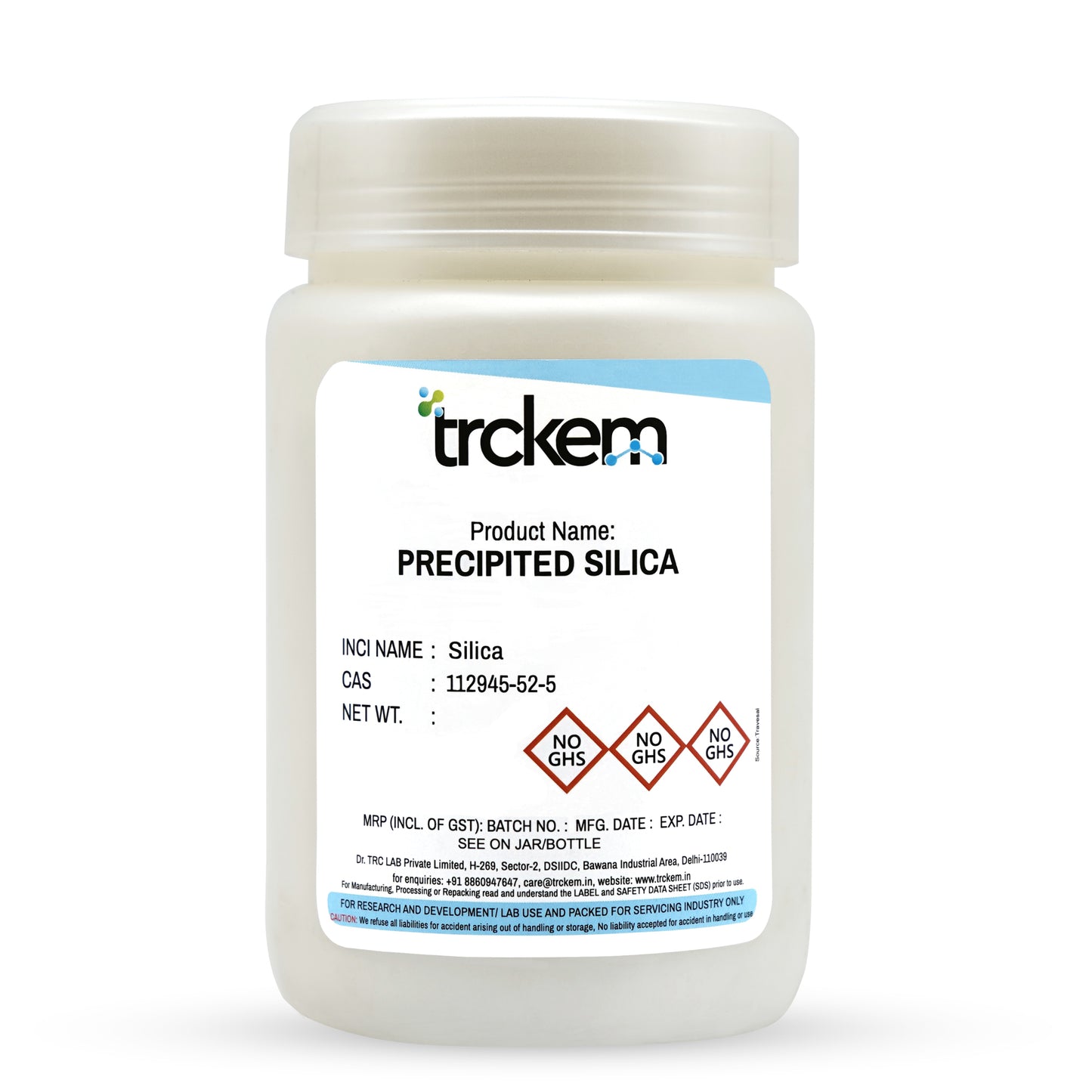


FAQ (FREQUENTLY ASKED QUESTIONS)
1. What is Precipitated Silica?
Precipitated Silica is a high-purity, synthetic, amorphous form of silicon dioxide. In personal care, it is valued for its thickening, mattifying, and absorbent properties, as well as for enhancing the texture and stability of cosmetic formulations.
2. What is the CAS Number and INCI Name of Precipitated Silica?
CAS Number: 7631-86-9
INCI Name: Silica
3. What are the benefits of using Precipitated Silica in personal care products?
Oil Absorption: Controls shine and sebum, leaving a matte finish.
Thickening & Rheology Control: Improves viscosity and stability of creams and gels.
Exfoliation: Provides gentle scrubbing action when used in oral care and skincare.
Smooth Skin Feel: Enhances product spreadability and offers a silky, lightweight touch.
Stability Enhancer: Prevents caking and improves free-flow properties in powder formulations.
4. What are the common applications of Precipitated Silica in personal care?
Facial Powders & Makeup: For oil control and mattifying effects.
Toothpaste: As a mild abrasive and thickener.
Creams, Lotions & Gels: Improves viscosity and product texture.
Deodorants & Body Powders: Provides absorbency and smooth application.
Exfoliating Scrubs: Works as a gentle polishing agent.
5. Is Precipitated Silica safe for use in personal care products?
Yes, Precipitated Silica is considered safe and non-toxic when used in cosmetics. It is non-crystalline (amorphous), meaning it does not pose the same health risks as crystalline silica.




